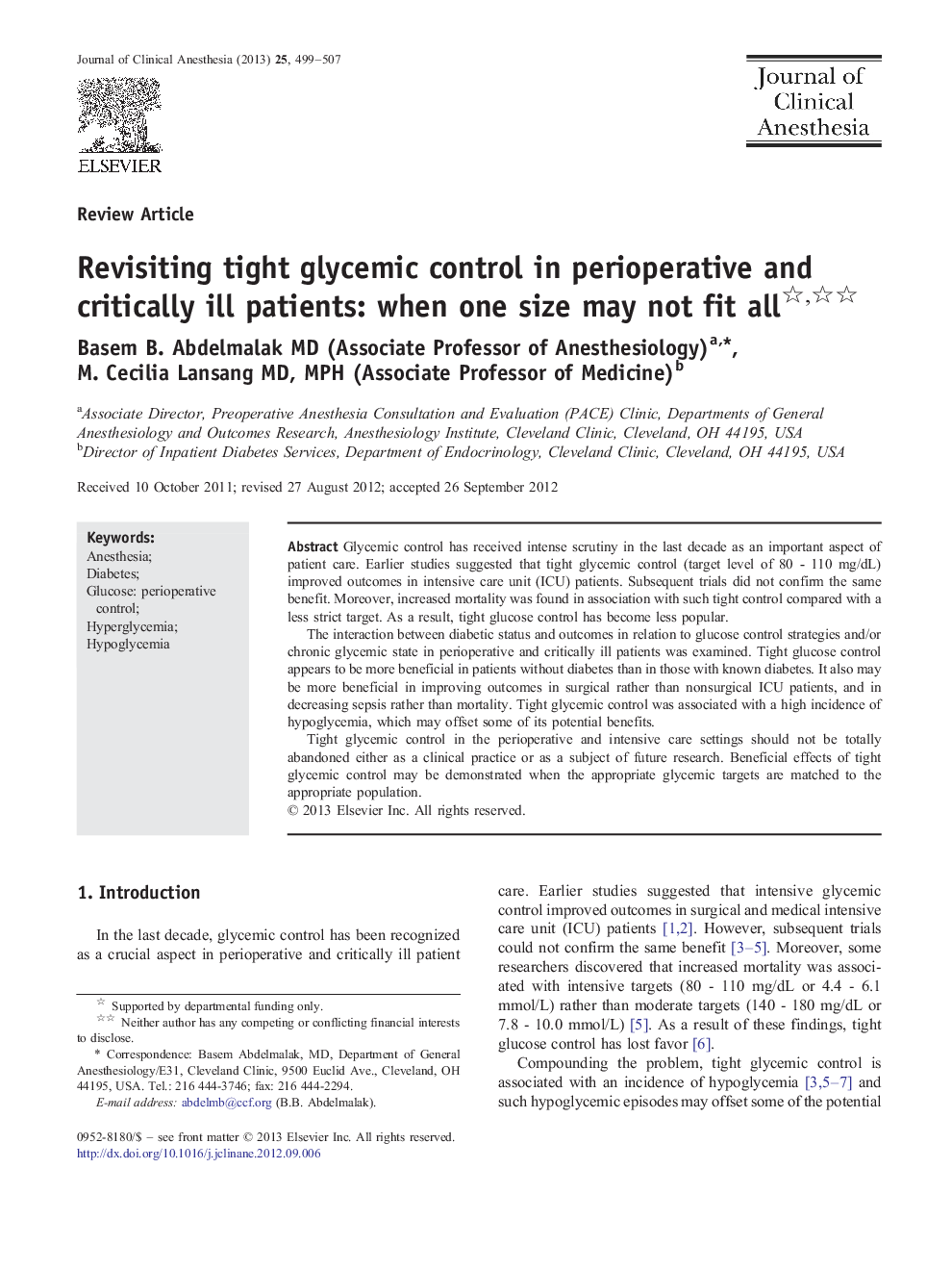| Article ID | Journal | Published Year | Pages | File Type |
|---|---|---|---|---|
| 2762755 | Journal of Clinical Anesthesia | 2013 | 9 Pages |
Glycemic control has received intense scrutiny in the last decade as an important aspect of patient care. Earlier studies suggested that tight glycemic control (target level of 80 - 110 mg/dL) improved outcomes in intensive care unit (ICU) patients. Subsequent trials did not confirm the same benefit. Moreover, increased mortality was found in association with such tight control compared with a less strict target. As a result, tight glucose control has become less popular.The interaction between diabetic status and outcomes in relation to glucose control strategies and/or chronic glycemic state in perioperative and critically ill patients was examined. Tight glucose control appears to be more beneficial in patients without diabetes than in those with known diabetes. It also may be more beneficial in improving outcomes in surgical rather than nonsurgical ICU patients, and in decreasing sepsis rather than mortality. Tight glycemic control was associated with a high incidence of hypoglycemia, which may offset some of its potential benefits.Tight glycemic control in the perioperative and intensive care settings should not be totally abandoned either as a clinical practice or as a subject of future research. Beneficial effects of tight glycemic control may be demonstrated when the appropriate glycemic targets are matched to the appropriate population.
